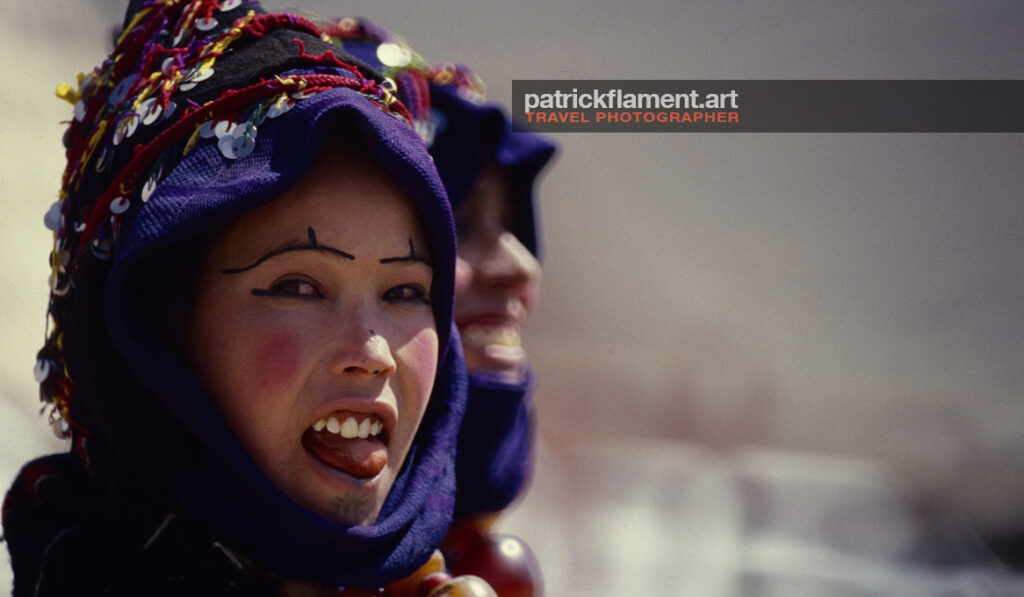In a valley of the High Atlas, the Moussem of Fiancés in Imilchil is one of the most beautiful popular gatherings in Morocco. Located at an altitude of nearly 2500m in a region of wild beauty, the village of Imilchil, a name that resonates like three notes of music, celebrates this great festival at the end of September every year. This event gathers the populations of the province of Errachidia, particularly the Ait Hadiddou tribe. This annual tradition dates back to immemorial times and is deeply rooted in history. For this occasion, men and women dress in their finest traditional garb. The women often wear colourful dresses adorned with jewellery and embroidery, while the men don djellabas and turbans.
According to the testimony of some elders of the Aït Hdiddou tribe, it is composed of two factions: the Aït Yaazza and Aït Brahim. The young people of the tribe have taken the habit of organizing a collective marriage festival at the end of each summer season. The grander the harvest, the grander the festivities. Any visitor from neighboring tribes is welcomed by the Aït Hdiddou, who offer them hospitality and lodging. The days of celebration are enlivened by the famous AHIDOUS dance, performed by the Aït Hdiddou, with only widows and divorced women taking part, choosing their place among the men.



For the Aït Hadiddou tribe, the moussem is not just an event; it is a gathering with commercial, social, and religious purposes. The meaning of the Berber word “Imilchil,” etymologically “Imi n Lkil” in Berber and “Foum El Kail” in Arabic, means “Gate of Prosperity.” This is confirmed by the fact that the moussem site used to serve as a market for exchanging certain agricultural products and handicrafts between the two sides of the Atlas.
This moussem is also known among the Aït Hdiddou and other neighboring tribes as “Agdoud n’Oulmaghni,” meaning “the gathering of Oulmaghni,” in reference to the saint Marabout, Sidi Ahmed Oulmaghni, whose tomb lies at the moussem site. Others call it “Souk Aame” or “the market of the year,” as it was once the only opportunity to stock up for the entire year without resorting to other markets.
After the consent of the future spouses, the families proceed with the marriage formalities. The establishment of the marriage contract itself can be done immediately or postponed until the moussem is held. The groom’s parents will ask for the bride’s hand, the groom or his guardian will offer a symbolic dowry to his future wife, and the bride’s father will take care of buying her clothes for the first year.
The entire tribe then expresses its joy by participating in the marriage ceremony, characterized by songs and dances that last for five days. Guests will enjoy various dishes of the Aït Hadiddou cuisine, especially different types of bread.
It goes without saying that this Moussem is a must-see for those who are fortunate enough to be in this region at the end of September, especially for “image-capturing travelers.”













